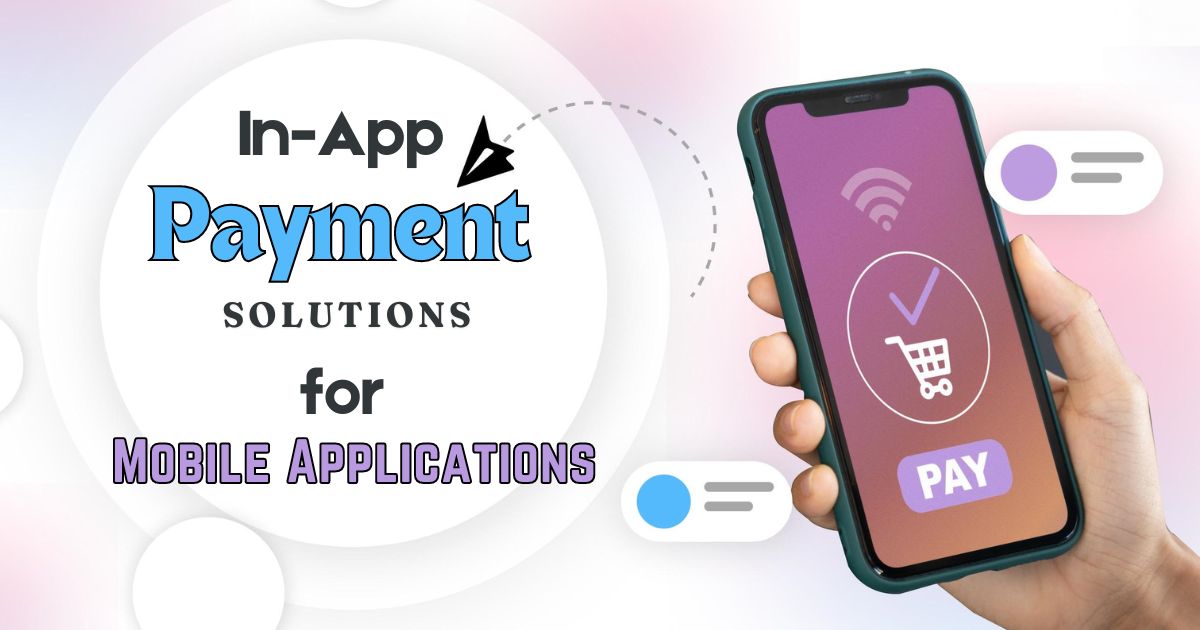
| February 22nd, 2024 |
Unlocking Revenue Streams — Exploring In-App Payment Solutions!
In today’s digital landscape, where mobile applications dominate consumer interaction, seamless and secure in-app payment solutions are crucial for monetization and user satisfaction. As the world becomes increasingly reliant on mobile devices for everyday tasks, businesses must leverage efficient payment methods within their apps to capitalize on this growing trend. This blog explores the diverse landscape of in-app payment solutions, their benefits, challenges, and best practices for integration.
Understanding In-App Payments —
In-app payments refer to transactions conducted within a mobile application to purchase goods, services, or digital content. These transactions are facilitated through various payment methods, including credit/debit cards, mobile wallets, digital currencies, and platform-specific payment systems like Apple Pay and Google Pay.
Benefits of In-App Payment Solutions —
Enhanced User Experience:
In-app payments streamline the purchasing process, eliminating the need for users to navigate external websites or re-enter payment information repeatedly. This convenience enhances user satisfaction and encourages repeat transactions.
Increased Revenue Opportunities:
By offering seamless payment options, businesses can capitalize on impulse purchases and upsell opportunities within their apps. Additionally, in-app purchases and subscriptions provide a recurring revenue stream for app developers.
Improved Security:
Leading in-app payment solutions incorporate robust security measures, such as encryption and tokenization, to safeguard users’ financial information. This instills trust and confidence among customers, leading to higher conversion rates.
Faster Transaction Processing:
In-app payments offer swift transaction processing, reducing the time between purchase initiation and completion. This rapid processing enhances user convenience, especially for time-sensitive transactions or in-demand products/services.
Personalized User Experience:
In-app payment solutions enable businesses to gather valuable transaction data and user preferences, facilitating the delivery of personalized recommendations and targeted marketing campaigns. By analyzing purchasing patterns, businesses can tailor their offerings to meet individual needs, fostering deeper engagement and loyalty.
Global Reach and Localization:
In-app payment solutions support multiple currencies and languages, allowing businesses to expand their reach to a global audience. By localizing payment options and pricing, businesses can cater to diverse markets and cultural preferences, driving international growth and market penetration.
Subscription Monetization:
In-app subscriptions offer a recurring revenue model, providing businesses with predictable income streams and fostering long-term customer relationships. Subscription-based apps benefit from higher customer retention rates and lifetime value, as users commit to regular payments in exchange for ongoing access to premium features or content.
Promotion and Discount Flexibility:
In-app payment solutions facilitate the implementation of promotional offers, discounts, and loyalty programs to incentivize purchases and reward customer loyalty. Businesses can dynamically adjust pricing and promotional strategies based on user behavior and market trends, optimizing revenue generation and customer engagement.
Integration with Analytics and Reporting Tools:
In-app payment solutions often come with built-in analytics and reporting capabilities, allowing businesses to track key performance metrics, monitor revenue trends, and gain insights into user behavior. By leveraging actionable data insights, businesses can refine their monetization strategies, identify growth opportunities, and drive continuous improvement.
Monetization Flexibility for Developers:
In-app payment solutions offer developers flexibility in monetizing their apps, whether through one-time purchases, freemium models, in-app advertising, or a combination of strategies. This versatility enables developers to experiment with different revenue streams and optimize their monetization strategies based on user feedback and market dynamics.
Types of In-App Payment Solutions —
Native Payment SDKs:
Platform-specific software development kits (SDKs) provided by Apple, Google, and other mobile operating systems facilitate in-app payments directly through the respective app stores. These SDKs offer seamless integration and ensure compliance with platform guidelines.
Third-Party Payment Gateways:
External payment gateways like PayPal, Stripe, and Braintree enable developers to integrate customizable payment solutions into their apps. These gateways support multiple payment methods and offer advanced features such as fraud detection and international currency support.
Mobile Wallets:
Services like Apple Pay, Google Pay, and Samsung Pay allow users to store payment credentials securely on their devices and make contactless payments within apps using biometric authentication or PIN codes. Integrating mobile wallets enhances user convenience and reduces friction during checkout.
Challenges of In-App Payment Integration —
Complexity and Compliance:
Integrating in-app payment solutions involves navigating complex technical requirements and adhering to stringent security and compliance standards, such as PCI DSS (Payment Card Industry Data Security Standard) and GDPR (General Data Protection Regulation).
User Trust and Security Concerns:
Instances of data breaches and fraudulent activities in the digital realm have raised concerns among users regarding the security of their payment information. App developers must prioritize security measures and transparent communication to build trust with their user base.
Revenue Sharing:
App stores typically charge a commission on in-app purchases and subscriptions, ranging from 15% to 30%, which can impact the profitability of app developers. Finding a balance between revenue sharing and profitability is essential for sustainable growth.
Best Practices for In-App Payment Integration —
- Simplify Checkout Process: Minimize the number of steps required for users to complete a purchase, and offer guest checkout options to streamline the process further.
- Optimize for Mobile Devices: Ensure that the payment interface is responsive and optimized for various screen sizes and devices to provide a seamless experience across platforms.
- Implement Strong Security Measures: Encrypt sensitive data, utilize tokenization techniques, and adhere to industry standards to protect users’ financial information from unauthorized access.
- Provide Transparent Pricing: Clearly communicate pricing information, including taxes and fees, to avoid any surprises during checkout and build trust with customers.
- Offer Multiple Payment Options: Cater to diverse user preferences by supporting multiple payment methods, including credit/debit cards, mobile wallets, and digital currencies, to maximize conversion rates.
Conclusion —
In-app payment solutions play a pivotal role in the success of mobile applications, enabling businesses to monetize their offerings effectively while enhancing user satisfaction and loyalty. By understanding the diverse landscape of payment options, addressing challenges, and implementing best practices for integration, app developers can unlock new revenue streams and create compelling experiences that resonate with users in an increasingly mobile-centric world.